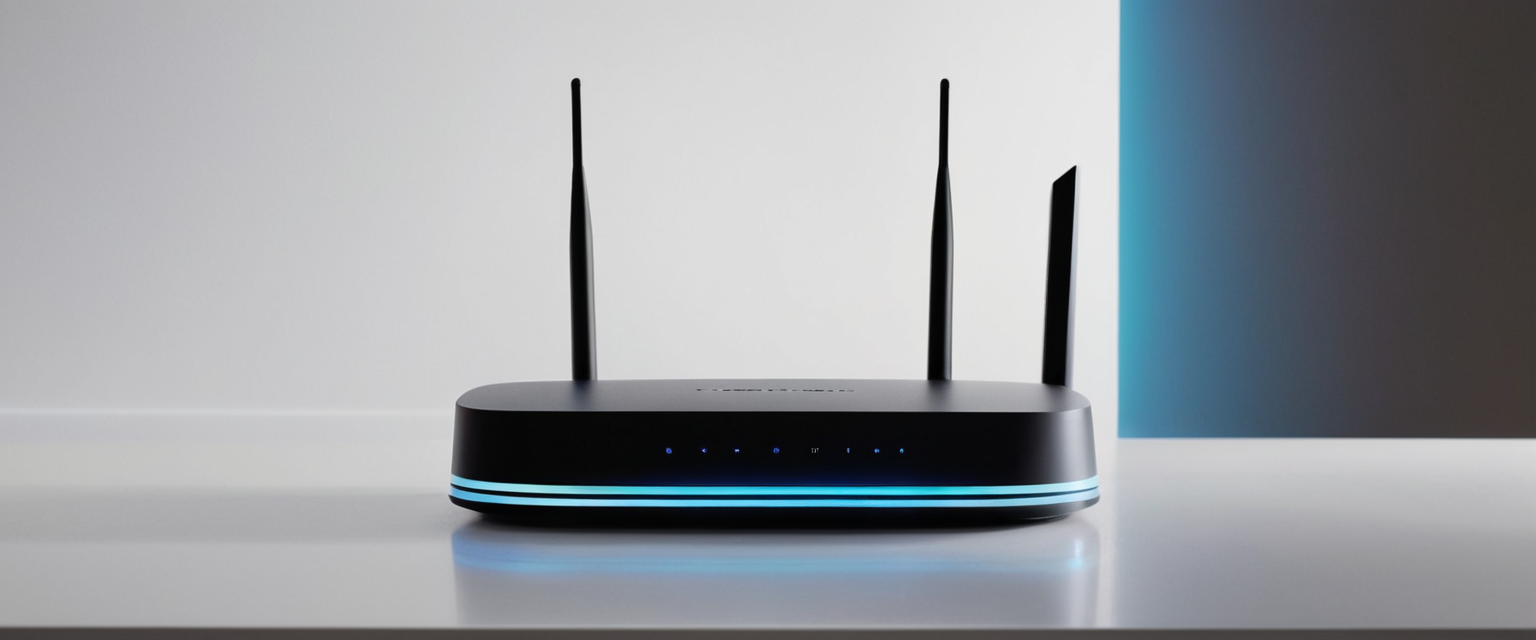
Router-level VPNs represent a paradigm shift in how organizations and households approach network security by establishing a unified encryption layer that protects all connected devices through a single gateway rather than requiring individual device installations. Unlike traditional device-level VPN implementations that require separate software installation on each endpoint, router-based VPN solutions encrypt traffic at the network perimeter, creating a comprehensive security architecture where every connected device—from smartphones to smart televisions to IoT sensors—automatically benefits from encryption without any additional configuration. This comprehensive analysis examines the technical foundations, implementation methodologies, security capabilities, performance considerations, and emerging vulnerabilities of router-level VPN gateways, demonstrating that while these solutions offer substantial advantages for whole-home privacy, they also introduce unique challenges related to misconfiguration, performance degradation, and evolving cyber threats that demand careful consideration in deployment scenarios.
Foundational Architecture and Operational Mechanisms of Router-Level VPN Gateways
The fundamental distinction between router-level VPN implementations and traditional device-centric approaches lies in the network topology and encryption point. When a Virtual Private Network is installed on a router, it operates at the network gateway level, meaning the router itself establishes and maintains the encrypted tunnel to a remote VPN server rather than individual devices managing their own connections. This architectural choice represents a meaningful departure from conventional VPN deployment models, which typically require users to install dedicated software applications on every device requiring protection, creating friction through the need for repeated manual configurations, credential management across multiple endpoints, and careful coordination of which devices should be protected at any given moment.
The operational mechanics of a router-level VPN begin with the router connecting your home or office network to a VPN provider’s server, establishing an encrypted tunnel through which all internet traffic destined for and originating from connected devices flows. Once this tunnel is established and active, every device physically or wirelessly connected to that router automatically benefits from the encryption, IP address masking, and location obfuscation provided by the VPN service. This means that when you connect your smartphone to your home Wi-Fi network that has been configured with a VPN, that smartphone’s traffic—whether browsing websites, accessing cloud services, or streaming media—is automatically encrypted without requiring any VPN app installation or active connection step on the device itself.
The encryption process at the router level involves sophisticated packet manipulation where your data is encapsulated, encrypted, and routed through the VPN provider’s infrastructure before reaching its destination on the internet. The router acts as an intermediary that intercepts outbound traffic, subjects it to the cryptographic transformations specified by the chosen VPN protocol, and forwards it through the encrypted tunnel to the VPN exit node. Return traffic follows the reverse path, being decrypted at the router before being distributed to the appropriate connected devices. This entire process occurs transparently from the perspective of end-user devices, which continue to operate as though they are directly connected to the internet, unaware that their traffic is transiting through an encrypted channel managed by router-level security infrastructure.
Network Layer Encryption and Traffic Flow Analysis
Understanding how router-level VPN gateways manage network traffic requires examining the relationships between different protocol layers and how encryption can be applied at the network level rather than the application level. Traditional device-level VPNs typically operate at the application or transport layer, meaning they protect specific applications or connections that explicitly support VPN protocols. In contrast, router-level implementations often operate at the network layer (Layer 3 in the OSI model), which means they can protect all protocols and applications without requiring specific software support on client devices. This is achieved through technologies like IPSec in tunneling mode or OpenVPN configured to intercept all network traffic, and represents a fundamental architectural difference with profound implications for security coverage and device compatibility.
When a packet originates from a connected device and is destined for an external resource on the internet, it first reaches the router with the device’s real IP address in the packet header and the application data in the payload. The VPN gateway software running on the router examines this packet, determines that it should be protected, and performs several transformations: it encrypts the packet’s data payload, wraps it inside a new packet structure (called encapsulation), and modifies the IP header so that the encrypted packet appears to originate from the VPN server’s location rather than from the user’s actual network. Only the entry point of the VPN tunnel (the router) and the exit point (the VPN provider’s server) can decrypt and understand the original packet contents; all intermediate routers and network observers see only encrypted data traveling between the user’s router and the VPN provider’s server.
This architectural approach provides comprehensive coverage because it operates at the network layer where all traffic must pass through the router to reach the internet. Devices connected to the router cannot bypass the VPN encryption even if they wanted to, making router-level implementations inherently more reliable than device-level VPNs where users must remember to manually activate the VPN application before sensitive activities. Additionally, this approach provides protection for devices that lack native VPN support or cannot have VPN software installed, which is particularly valuable for securing IoT devices, smart televisions, gaming consoles, and other embedded systems that form an increasingly important part of modern network environments.
VPN Protocol Implementation on Router Architecture
Router-level VPN gateways support multiple VPN protocols, each with distinct technical characteristics, security properties, and performance implications that must be understood when selecting and configuring whole-home protection systems. The most commonly supported protocols across VPN-compatible routers include OpenVPN, WireGuard, IPSec with IKEv2, L2TP, and PPTP, each representing different approaches to establishing encrypted communications channels and managing cryptographic key material.
OpenVPN represents one of the most widely supported and flexible VPN protocols on router platforms, offering strong security through support for the highest encryption standards available in VPN implementations. OpenVPN uses 256-bit AES encryption in its default configuration, implements encryption through the robust OpenSSL cryptographic library, and provides excellent compatibility across different network configurations because it operates over both UDP and TCP transport protocols. This flexibility allows OpenVPN to function even in restrictive network environments where certain ports or protocols might be blocked, though the TCP variant typically introduces additional latency compared to UDP implementations. The protocol’s codebase consists of approximately 70,000 lines of code, which enables substantial configurability but also introduces complexity that can make auditing and optimization more challenging than simpler alternatives. For router implementations, OpenVPN remains the most pragmatic choice for many users because it balances security, compatibility, and ease of configuration.
WireGuard has emerged as a modern alternative to OpenVPN that emphasizes simplicity, speed, and contemporary cryptography while reducing complexity through a dramatically smaller codebase of approximately 4,000 lines of code. This protocol uses ChaCha20-Poly1305 for symmetric encryption instead of AES, implements Curve25519 for elliptic-curve Diffie-Hellman key agreement, and employs BLAKE2s for hashing operations. The reduced codebase makes WireGuard significantly easier to audit and review, potentially reducing the attack surface compared to more complex protocols, and the streamlined implementation typically delivers faster speeds and lower latency than OpenVPN in real-world testing scenarios. However, WireGuard is relatively new and, while it has undergone third-party security audits and been incorporated into the Linux kernel as of version 5.6, it has not received the same decades of field testing and real-world hardening that OpenVPN has experienced.
IPSec with IKEv2 operates at the network layer and represents an enterprise-grade approach to VPN that provides secure tunneling between network gateways and end-user devices. IPSec uses the Internet Key Exchange (IKE) protocol to establish secure associations between communicating parties and supports multiple encryption algorithms including 3DES, AES, Blowfish, and Camellia. The protocol operates in two distinct modes: tunnel mode, which encrypts and authenticates entire IP packets including headers, and transport mode, which encrypts only the data payload while leaving IP headers unencrypted. For router implementations, tunnel mode is virtually always used because it enables Network Address Translation (NAT) traversal and allows packets to be routed through different network paths, which is essential for internet communication. However, concern exists regarding IPSec’s security because leaked NSA presentations have suggested that the agency may have inserted vulnerabilities into the protocol to enable monitoring of VPN users, creating hesitation among security-conscious organizations despite IPSec having no known major vulnerabilities when properly implemented.
L2TP (Layer 2 Tunneling Protocol) provides secure communication through combination with IPSec for encryption, offering adequate security and compatibility but generally performing slower than more modern alternatives. Similarly, PPTP represents one of the oldest VPN protocols and is now considered fundamentally insecure due to well-documented cryptographic weaknesses in its Challenge Handshake Authentication Protocol (CHAP) and MPPE encryption mechanisms that were identified as early as 1998. Most security professionals recommend avoiding PPTP except as a last resort when no other options are available.
Router Hardware Requirements and Processing Capabilities
Effective deployment of router-level VPN gateways requires careful attention to hardware specifications and processing capabilities because VPN encryption operations are computationally intensive and can significantly degrade network performance on inadequate hardware. The cryptographic transformations required to encrypt and decrypt all network traffic flowing through a router represent substantial CPU load that distinguishes VPN-capable routers from standard network appliances.
The processor speed represents a critical specification when evaluating router hardware for VPN use, with experts recommending minimum CPU speeds of approximately 800 MHz to adequately handle VPN encryption overhead without introducing unacceptable latency or throughput degradation. High-end routers designed specifically for VPN operation often incorporate Intel processors with Advanced Encryption Standard New Instructions (AES-NI), which provide hardware acceleration for AES encryption operations and can substantially improve VPN throughput by offloading cryptographic calculations to specialized processor instructions rather than requiring general-purpose CPU cycles. Routers without hardware acceleration must perform all encryption calculations through general software implementations, which consumes significantly more CPU resources and typically results in reduced overall network performance for connected devices.
Random Access Memory (RAM) represents another critical specification because routers must buffer network packets during the encryption and decryption process, and insufficient RAM can lead to packet loss or slowdowns as the system becomes memory-constrained. High-performance VPN routers typically include 1GB or more of RAM, though this varies substantially across different models and manufacturers. For example, the InvizBox 2 Pro VPN router includes 1GB of DDR3 RAM, which is substantial for a home router and enables it to handle multiple simultaneous connections without network congestion, whereas basic models might operate with 256MB or 512MB of RAM.
The wireless standard supported by the router also affects overall network performance, as modern Wi-Fi 6 (802.11ax) routers support significantly higher data rates and more efficient spectrum usage than older Wi-Fi 5 (802.11ac) or Wi-Fi 4 (802.11n) routers. VPN routers that support Wi-Fi 6 can deliver gigabit speeds even with VPN encryption enabled because they benefit from improved wireless efficiency, though the specific performance also depends on signal strength, interference, and distance from the access point. Some advanced routers incorporate tri-band designs that offer 2.4 GHz and two 5 GHz bands (or 2.4 GHz and 6 GHz on Wi-Fi 6E models), providing multiple data pathways and reducing congestion for homes with numerous connected devices.
Deployment Methodologies and Router Configuration Options
Organizations and households seeking to implement router-level VPN protection have several distinct approaches available, ranging from purchasing pre-configured devices that require minimal technical knowledge to manually flashing custom firmware onto existing routers for advanced users with specific technical requirements.
Pre-configured VPN routers represent the most accessible deployment option, where manufacturers or VPN providers deliver routers with VPN software already installed, tested, and configured to connect to the VPN provider’s servers. These devices arrive ready to use with minimal setup—typically requiring only power connection, Wi-Fi network configuration, and basic authentication credential entry before whole-home VPN protection becomes active. The ExpressVPN Aircove router exemplifies this approach, arriving with ExpressVPN firmware pre-installed and delivering 24/7 support for users experiencing technical issues. Pre-configured options eliminate the complexity and technical risk associated with manual configuration, making them ideal for non-technical users or organizations that prioritize simplicity and support over customization flexibility. However, pre-configured devices typically command premium pricing compared to standard routers, with basic models starting around $88 and high-end options exceeding $300.
VPN-ready routers represent a middle ground between pre-configured devices and DIY implementations, referring to routers that support VPN functionality through their standard stock firmware without requiring installation of alternative operating systems. Popular examples include Asus routers with AsusWRT firmware, which natively support OpenVPN and WireGuard through built-in menu interfaces that guide users through VPN configuration without requiring command-line access or firmware replacement. These routers typically cost less than pre-configured options while still delivering straightforward setup processes, with many supporting complete VPN configuration within 15-20 minutes for users with modest technical proficiency. VPN-ready routers offer substantially greater flexibility than pre-configured devices because users can switch between different VPN providers, adjust encryption protocols, and customize advanced features directly through the router’s admin interface.
Custom firmware implementations represent the most complex deployment option but also offer maximum flexibility and control for advanced users willing to invest significant technical effort. Third-party router firmware packages like DD-WRT, Tomato, OpenWRT, and pfSense provide extensive customization options, multiple protocol support, and advanced networking features but require users to “flash” (install) new firmware onto their existing routers, a process that carries some risk of rendering the device inoperable if performed incorrectly. DD-WRT represents one of the most feature-rich and widely supported custom firmware options, offering comprehensive control over VPN settings, split tunneling, kill switches, and advanced network management, though its complexity can overwhelm users unfamiliar with networking terminology. Tomato firmware prioritizes user-friendliness and intuitive interfaces over maximum customization, making it an appealing option for users who want more control than stock firmware provides but prefer simpler workflows than DD-WRT delivers. OpenWRT offers excellent device support across diverse router models and provides substantial customization capabilities for users comfortable with command-line configuration, while pfSense delivers enterprise-grade functionality suitable for small businesses and advanced home labs but requires substantial technical proficiency.

Advanced Security Features and Privacy Protection Mechanisms
Modern router-level VPN implementations incorporate sophisticated security features that extend beyond basic traffic encryption to provide comprehensive protection against various attack vectors and privacy threats that users face in contemporary internet environments.
Kill switch functionality represents a critical security feature that prevents accidental IP address exposure if the VPN connection unexpectedly disconnects. Without a kill switch, an interruption in the VPN tunnel connection causes devices to revert to unencrypted internet access without user awareness, potentially exposing sensitive activities to ISPs, network administrators, or malicious actors monitoring network traffic. An active kill switch responds to VPN disconnection by immediately blocking all internet traffic for connected devices until the VPN connection is restored, ensuring that no data can leak outside the encrypted tunnel. However, implementation of kill switches on routers presents particular challenges compared to device-level implementations because the router must quickly identify VPN connection loss and enforce the traffic blocking rule across all connected devices, and some router implementations exhibit delays of 15-20 seconds between VPN disconnection and actual traffic blocking, creating windows of vulnerability.
DNS leak protection prevents a common class of privacy breaches where DNS queries that resolve domain names to IP addresses bypass the VPN tunnel and are processed by the user’s default DNS server (often operated by the ISP), exposing browsing activity even when all other traffic is encrypted. DNS leaks occur when applications or operating systems cache DNS servers before the VPN connection is established, or when certain OS features like Windows’ Smart Multi-Homed Name Resolution bypass VPN configuration and query DNS servers outside the encrypted tunnel. Comprehensive DNS leak protection requires routers to intercept all DNS queries, route them through VPN servers rather than external DNS services, and prevent applications from discovering or using alternative DNS servers outside the VPN tunnel.
Split tunneling provides granular control over which traffic is encrypted through the VPN and which traffic bypasses the tunnel to access the internet directly, enabling users to optimize performance for latency-sensitive applications while maintaining encryption for sensitive communications. Split tunneling can be implemented at multiple levels: application-level split tunneling routes traffic from specific applications through the VPN while other applications access the internet directly, IP-based split tunneling routes traffic to specific IP addresses or subnets outside the tunnel, and domain-based split tunneling applies routing decisions based on DNS domain names. Inverse split tunneling reverses the default behavior by encrypting all traffic except specifically excluded applications or destinations, providing better privacy by default while maintaining performance flexibility.
Network segmentation and device isolation capabilities allow routers to create separate virtual networks for different device categories, such as IoT devices, guest networks, or work-related devices, with granular control over inter-network communication and VPN application. This approach prevents potentially compromised IoT devices from accessing sensitive devices or communications even if they successfully breach the router’s security, implementing the principle of least privilege where devices have access only to resources they specifically require.
Performance Analysis and Speed Impact Considerations
A persistent concern among potential router-level VPN adopters involves the speed and latency impact that encryption operations introduce, as VPN processing inherently adds computational overhead that can degrade user experience for performance-sensitive activities like gaming, video conferencing, or high-bandwidth file transfers.
VPNs impact internet speed through multiple mechanisms. The first involves encryption overhead, where every packet passing through the VPN tunnel must be encapsulated with additional headers and metadata, effectively reducing the usable payload capacity of network packets. A standard Ethernet frame supports a maximum transmission unit (MTU) of 1500 bytes, which after accounting for IP headers (20 bytes) and TCP headers (20 bytes) or UDP headers (8 bytes) leaves approximately 1460 bytes of usable data in TCP mode. When OpenVPN adds its 41-byte overhead (or WireGuard adds 32 bytes), the effective payload must be reduced accordingly, and if the total encapsulated packet exceeds the network MTU, it must be fragmented into multiple packets, creating substantial overhead that can reduce useful throughput by double-digit percentages.
A second performance factor involves server load and latency, where users connecting to congested VPN servers experience degraded performance because the server has insufficient capacity to process all requests with minimal delay. The “trombone effect” creates particularly severe latency when traffic must travel from a user’s location to a distant VPN server and then back across the internet to reach its actual destination—for example, a user in Oregon connecting through a Texas-based VPN server to access a nearby data center would see traffic traverse Oregon→Texas→nearby destination→Texas→Oregon, introducing substantial latency compared to the direct nearby path.
Protocol selection substantially affects performance, with WireGuard typically delivering faster throughput and lower latency than OpenVPN in real-world deployments because its streamlined codebase and modern cryptography require less CPU processing. In one test comparing WireGuard and OpenVPN using the same VPN service and server location, both protocols achieved approximately 90 Mbps download speed, but WireGuard demonstrated significantly superior responsiveness with latency dropping from 113ms on OpenVPN (TCP) to just 40ms on WireGuard, and eliminating jitter entirely.
Router hardware capability fundamentally constrains performance, as adequate CPU power with hardware acceleration (AES-NI) produces substantially better results than underpowered routers struggling to process encryption operations. High-end routers with modern processors and AES-NI support can deliver 300-400 Mbps+ OpenVPN throughput or 500+ Mbps WireGuard speeds, sufficient for most home and small business applications, while basic routers with limited processors might achieve only 50-100 Mbps.
In most circumstances, users will not notice significant speed reduction when using a router VPN connected to a geographically nearby server, particularly with modern protocols like WireGuard on capable hardware. However, performance-critical applications, high-bandwidth streaming requirements, or connections to distant servers can introduce noticeable degradation, requiring users to balance security and privacy against performance requirements.
Comparison with Device-Level VPN Implementations
Understanding the strategic differences between router-level and device-level VPN approaches enables organizations and individuals to make informed decisions about which deployment model best matches their specific security requirements, technical capabilities, and use case characteristics.
Router-level VPNs provide comprehensive automatic protection for all connected devices without requiring individual application installations, representing a significant advantage for environments with numerous diverse devices. Every device that connects to the router—whether smartphones, laptops, smart televisions, gaming consoles, IoT sensors, or smart home hubs—automatically receives VPN protection regardless of whether the device supports native VPN applications or not. This universal protection is particularly valuable because many IoT devices and embedded systems cannot run VPN software, yet they transmit sensitive information that benefits from encryption and IP masking.
Device-level VPNs offer superior customization and granular control because each device can independently select which VPN server to connect to, switch between different VPN providers, enable or disable VPN protection on demand, and configure advanced options like split tunneling specifically for that device’s requirements. Travelers can activate VPN protection on portable devices without affecting stationary devices at home, and different household members can choose different VPN providers or servers based on personal preferences.
Router-level implementations provide set-it-and-forget-it convenience where configuration occurs once during router setup and thereafter requires no ongoing user action, protecting the household automatically without depending on individual users remembering to activate VPN applications. This passive protection is more reliable than device-level VPNs because humans frequently forget to activate security measures when they should, or fail to reactivate protection after manually disabling it for troubleshooting purposes.
Device-level VPNs avoid performance degradation on router hardware, as high-performance computers and mobile devices can handle encryption operations more efficiently than routers with limited processing power, potentially delivering better speeds than router-level implementations on underpowered hardware.
The most comprehensive security posture employs both approaches in combination, with a router-level VPN providing baseline protection for the entire household and additional device-level VPN instances running on portable devices like smartphones and laptops to maintain protection when connecting to untrusted networks outside the home, such as public Wi-Fi hotspots.
Security Vulnerability Analysis and Emerging Threats
Despite providing significant privacy and security benefits, router-level VPN implementations face evolving threats that underscore the importance of careful configuration, timely patching, and realistic threat modeling when designing security architectures.
A critical security challenge involves unpatched vulnerabilities in VPN software and router firmware that attackers actively exploit to gain unauthorized network access. Recent statistics reveal that 92% of organizations express concerns that unpatched VPN flaws directly lead to ransomware incidents, highlighting how difficult it is to maintain timely patches across diverse VPN deployments. Vulnerability research found that VPN Common Vulnerabilities and Exposures (CVEs) grew by 82.5% between 2020 and 2024, with roughly 60% of recent vulnerabilities indicating high or critical CVSS severity scores. Worryingly, remote code execution (RCE) vulnerabilities represent the most prevalent type, enabling attackers to execute arbitrary code on compromised VPN gateways and then pivot laterally to attack other network resources.
High-profile VPN appliance compromises in recent years demonstrate how effectively attackers exploit VPN infrastructure to achieve initial network access. The SonicWall series of vulnerabilities created multiple unauthorized access pathways that bypassed multi-factor authentication protections, enabled lateral movement through corporate networks, and facilitated deployment of ransomware at enterprise scale. Ivanti Connect Secure devices fell victim to zero-day vulnerabilities in early 2024 that granted attackers unfettered remote access capabilities. Fortinet’s SSL-VPN products experienced repeated critical flaws including CVE-2023-27997, which allowed remote code execution, and Palo Alto’s GlobalProtect platform required patches to address privilege escalation vulnerabilities discovered in 2024.
The central architectural risk inherent to VPN gateways involves their function as a single point of entry to protected networks, meaning that successful compromise of a VPN gateway grants attackers complete access to all resources behind that gateway. Once attackers establish access through a compromised VPN, they can move laterally through the network, disable security controls, steal sensitive data, deploy ransomware, or persist indefinitely for espionage purposes.
Misconfiguration represents a frequently overlooked security risk where poorly configured VPN gateways create unintended security holes that undermine the protective benefits these systems should provide. Verizon’s 2022 Data Breach Investigations Report indicates that the human element was present in over 80% of data breaches, with carelessness including misconfiguration as the third-leading action vector. The 2022 Viasat attack exemplified how a misconfigured VPN enabled attackers to gain unauthorized network access and cause widespread service disruption. The NSA and CISA jointly recommend disabling unneeded VPN features, implementing strict traffic filtering rules that limit accepted traffic to known VPN peer IP addresses, and conducting thorough configuration reviews before deploying VPN gateways in production environments.
Third-party connection vulnerabilities introduce additional risk when organizations grant external partners, contractors, or vendors access through VPN gateways, as 93% of respondents in recent research express concerns over backdoor vulnerabilities introduced by third-party VPN connections. Attackers increasingly exploit third-party credentials to breach networks undetected, leveraging relationship chains to attack primary targets through less-well-defended partner networks.
IoT Device Security and Smart Home Network Protection
Router-level VPNs provide particularly valuable protection for Internet of Things devices and smart home ecosystems, which have proliferated substantially in residential and commercial environments while remaining notoriously difficult to secure through conventional device-level approaches.
The IoT security challenge arises because smart devices including security cameras, smart thermostats, voice assistants, doorbell cameras, smart televisions, connected appliances, and fitness trackers are typically engineered with limited security capabilities, often operate with default or weak credentials, receive irregular security updates if any, and lack the processing capacity for sophisticated security measures like VPN software. These devices remain perpetually connected to the internet, creating persistent attack surfaces that sophisticated adversaries actively target for unauthorized access, data exfiltration, or recruitment into botnet armies.
Common IoT security threats include botnets where compromised IoT devices become controlled by remote attackers and coordinated into large-scale attacks against internet infrastructure (exemplified by the Mirai botnet attacks in 2016), man-in-the-middle attacks where unencrypted communications between IoT devices and their cloud services are intercepted or modified by attackers, general snooping where passive collection of IoT metadata builds detailed profiles of occupants’ behaviors and patterns, and unauthorized remote access where attackers exploit weak authentication to control smart devices without authorization.
Applying VPN encryption at the router level solves a critical IoT security gap because all traffic from IoT devices flowing through the VPN router becomes automatically encrypted and routed through the VPN provider’s infrastructure before reaching destination services on the internet. This means that even if an IoT device is compromised or configured with vulnerable security settings, attackers cannot intercept the device’s communications, cannot modify data in transit, and cannot determine the device’s actual location or true IP address because all traffic appears to originate from the VPN server’s location instead. Network segmentation capabilities in advanced routers further enhance IoT security by creating separate virtual networks for IoT devices that are isolated from personal devices and computers, preventing a compromised IoT device from accessing sensitive data stored on PCs or family photos stored on network-attached storage.
Additionally, router-level VPN protection addresses remote access security for IoT devices, allowing secure management of smart devices like security cameras, smart locks, or thermostats from anywhere in the world without exposing the devices’ control interfaces to the open internet where attackers can probe for vulnerabilities.

Enterprise and Small Business Implementations
While much discussion of router-level VPN protection focuses on residential applications, these technologies play increasingly important roles in business environments, particularly for organizations managing remote workforces, distributed operations, and small branch offices requiring secure connectivity back to headquarters networks.
The industrial VPN router market demonstrates substantial growth, with the market valued at approximately $48.7 billion in 2023 and forecast to reach nearly $150 billion by 2030, growing at a compound annual growth rate of 17.4%. This expansion reflects increased demand from manufacturing facilities, energy sector operations, transportation infrastructure, and other critical industries requiring secure remote access to control systems and operational technology networks.
Key business applications for router-level VPNs include extending corporate networks to remote offices or field locations, enabling secure remote access for traveling employees, providing branch-to-branch connectivity for multi-location organizations, securing IoT and operational technology in industrial settings, and offering guest network security for visitors or contractors accessing business premises.
The D-Link Gigabit VPN Router exemplifies enterprise-oriented router-level VPN implementation, providing enterprise-grade security suitable for small businesses and remote work scenarios through support for multiple VPN protocols (IPSec, PPTP, L2TP, OpenVPN, SSL), strong encryption options (DES, 3DES, AES), dual WAN failover for redundancy, and support for numerous simultaneous VPN tunnels and sessions. These features enable organizations to securely extend corporate networks to remote employees without requiring complex VPN gateway appliances or elaborate network infrastructure investments.
The security benefits for distributed businesses include preventing unauthorized access to sensitive corporate systems from compromised remote devices, protecting confidentiality of employee communications and sensitive business data transmitted between remote locations, maintaining regulatory compliance with data protection standards like HIPAA or PCI DSS that mandate encryption in transit, and defending against man-in-the-middle attacks where compromised internet service providers or malicious network operators attempt to intercept business communications.
Future Trends and Evolution of Router-Level VPN Technology
VPN technology and router-level security implementations are experiencing rapid evolution driven by emerging threats, technological innovations, and changing network environments that will reshape how whole-home VPN protection functions in coming years.
Decentralization and blockchain integration represent significant emerging trends where distributed VPN networks (dVPNs) leverage blockchain technology and distributed nodes to provide enhanced privacy compared to traditional centralized VPN server architectures. Rather than routing all traffic through central VPN company servers, dVPNs distribute the VPN infrastructure across a network of independent nodes, ensuring that no single entity can correlate user origin with destination addresses, substantially improving anonymity guarantees beyond what traditional centralized VPN architectures provide.
Quantum-resistant encryption development has become urgent as quantum computing technology matures, as current encryption algorithms including those commonly used in VPNs can be broken by sufficiently powerful quantum computers, rendering decades of encrypted communications vulnerable to retrospective decryption. VPN providers and router manufacturers are exploring post-quantum cryptography implementations designed to withstand quantum computational power, ensuring that security infrastructure remains effective in a post-quantum world.
5G integration and IoT expansion will drive router-level VPN evolution as 5G networks enable proliferation of connected IoT devices with extremely low latency requirements, necessitating VPN implementations that maintain performance under demanding real-time constraints while protecting diverse device categories with varying security capabilities. VPN routers will need to adapt to manage the unique challenges posed by massive device densities, rapid device churn, and extreme performance sensitivity of emerging IoT applications like autonomous vehicles or remote surgery systems.
Artificial Intelligence-driven security enhancements will enable VPN routers to identify and mitigate security threats in real-time through machine learning algorithms that analyze patterns, detect anomalies, and optimize routing decisions automatically without human intervention. AI could enhance threat detection by identifying unusual traffic patterns indicating potential compromises, optimize server selection to minimize latency and maximize throughput based on current network conditions, and predict emerging vulnerabilities before they become widespread threats.
Privacy regulation compliance becomes increasingly important as governments worldwide implement stricter data protection laws including GDPR, CCPA, and emerging regulations requiring VPN providers and router manufacturers to maintain transparent data practices, provide users with control over personal information, and demonstrate compliance with privacy standards. Router-level implementations will need to evolve to support compliance monitoring, provide detailed activity reporting for privacy-conscious users, and ensure that authentication and authorization mechanisms operate transparently within regulatory frameworks.
Practical Configuration Best Practices and Deployment Guidelines
Successfully deploying router-level VPN protection requires careful attention to configuration details, hardware selection, and operational practices that maximize security benefits while maintaining acceptable performance and reliability.
Router selection should prioritize VPN-compatible models with adequate processing power (minimum 800 MHz CPU recommended, preferably with AES-NI hardware acceleration), sufficient RAM (ideally 1GB or more), modern wireless standards (Wi-Fi 6 support preferred), and strong community support or vendor backing for security updates and firmware maintenance. Recommended router families include Asus models supporting AsusWRT firmware with native VPN support, GL.iNet devices optimized for VPN use with intuitive interfaces, and open-source platforms like OpenWRT where users have direct control over configurations.
VPN provider selection should emphasize services that explicitly support and document router configurations, offer fast and reliable servers across geographically diverse locations, implement no-logs policies verified by independent audits, employ strong encryption standards (256-bit AES or equivalent), and provide responsive customer support for technical issues. ExpressVPN, NordVPN, Surfshark, and Proton VPN exemplify providers with strong router support and documented configuration guides.
Initial configuration should involve accessing the router’s administrative interface, locating VPN client settings, entering VPN provider credentials and server information, selecting appropriate encryption protocols (WireGuard for speed, OpenVPN for compatibility and flexibility), enabling kill switch protection to prevent accidental IP leaks, configuring DNS leak protection to route DNS queries through VPN servers, and testing the configuration using DNS leak detection tools to verify proper operation.
Ongoing security maintenance requires regularly updating router firmware to patch security vulnerabilities, periodically testing DNS leak prevention to confirm the router hasn’t inadvertently changed DNS configurations, monitoring VPN connection status to ensure protection remains active, conducting occasional throughput testing to identify performance degradation that might indicate configuration issues, and verifying that guest networks are properly isolated from sensitive resources on the main network.
Advanced configuration for demanding use cases might include implementing split tunneling for specific applications requiring direct internet access alongside VPN-protected traffic, creating separate network segments for IoT devices with restricted inter-network communication, configuring multi-hop VPN chains that route traffic through multiple VPN servers for enhanced anonymity, implementing failover configurations where a secondary connection activates if the primary VPN fails, or deploying redundant routers for high-availability scenarios requiring continuity of VPN protection.
Challenges, Limitations, and Critical Considerations
While router-level VPN implementations provide substantial benefits for whole-home privacy, users and organizations should understand significant limitations and challenges that affect deployment decisions.
Cost represents a significant barrier for many users, as VPN-compatible routers cost substantially more than standard routers provided by internet service providers, with basic models starting around $50-$89, mid-range options ranging from $150-$300, and high-end performance models exceeding $300. When combined with ongoing VPN subscription costs (typically $5-15 monthly for quality services), the total cost of ownership can exceed $200+ annually, which may be prohibitive for budget-conscious households.
Speed degradation remains a persistent concern, particularly on routers with limited processing power or when connecting to distant VPN servers, where throughput reductions of 30-50% or more are possible compared to unencrypted internet access. Performance-sensitive applications like high-definition video streaming, competitive online gaming, or real-time video conferencing may experience noticeable degradation on under-provisioned hardware.
Configuration complexity can overwhelm non-technical users, particularly when implementing custom firmware on existing routers rather than purchasing pre-configured devices. Flashing firmware involves technical risks that could render the router inoperable, and advanced features like split tunneling, network segmentation, or custom firewall rules require networking knowledge beyond the average user’s expertise.
Limited router compatibility means that not all existing routers can be configured with VPN functionality, particularly older models or those from less technically sophisticated manufacturers. Even routers manufactured by tech-forward companies like Asus or TP-Link may only support VPN on premium models while excluding budget product lines from VPN capability.
Reduced customization granularity compared to device-level VPNs means that all devices on a router-based VPN use the same server location and cannot independently change VPN settings without accessing the router’s admin interface. Households where different members prefer different VPN configurations or locations face tradeoffs between universal VPN protection and individual flexibility.
Firewall and security complexity increases when implementing router-level VPNs, as users must understand port forwarding, firewall rules, UPnP implications, and other router security features to maintain security while enabling desired functionality, and misconfiguration creates vulnerabilities that undermine the VPN’s intended protections.
The Gateway to Whole-Home Privacy
Router-level VPN implementations represent a powerful approach to achieving whole-home privacy and security by extending VPN protection to all connected devices through a single gateway rather than requiring individual device configurations. These solutions provide particular value for environments with numerous diverse devices, including those that cannot run VPN software natively, for households where users cannot reliably remember to activate VPN protection on individual devices, and for organizations requiring convenient administration of security policies across large numbers of endpoints.
However, the benefits of router-level VPN protection must be balanced against real limitations including hardware costs, potential performance degradation, configuration complexity, and the ongoing security challenges presented by evolving vulnerabilities in VPN software and router firmware. Successful deployment requires careful selection of appropriate hardware with adequate processing capability, choosing reputable VPN providers with strong track records of security practices and responsive customer support, and implementing proper configuration practices including kill switch activation, DNS leak protection, and regular security updates.
The most robust security posture combines router-level VPN implementation for baseline whole-home protection with device-level VPN applications for portable devices used in untrusted environments, implements network segmentation to isolate IoT devices and guest networks, maintains vigilant attention to security updates and patches, and regularly tests configuration integrity using available tools to detect DNS leaks or other failure modes.
As VPN technology continues evolving toward decentralized architectures, quantum-resistant encryption, AI-assisted security management, and enhanced integration with emerging technologies like 5G and pervasive IoT deployments, router-level VPN implementations will increasingly become standard components of comprehensive home security strategies rather than optional enhancements for privacy-conscious users. Organizations and individuals seeking to protect their digital privacy in an era of ubiquitous connectivity, evolving cyber threats, and growing government and corporate surveillance will find that router-level VPN gateways deliver compelling value when properly implemented, configured, and maintained as part of a layered security architecture.
Protect Your Digital Life with Activate Security
Get 14 powerful security tools in one comprehensive suite. VPN, antivirus, password manager, dark web monitoring, and more.
Get Protected Now





